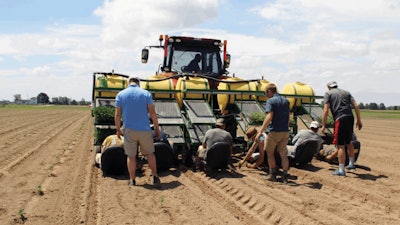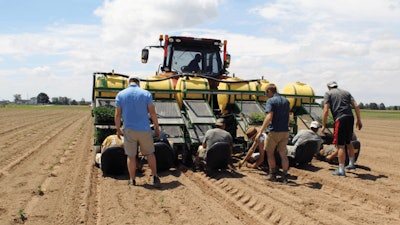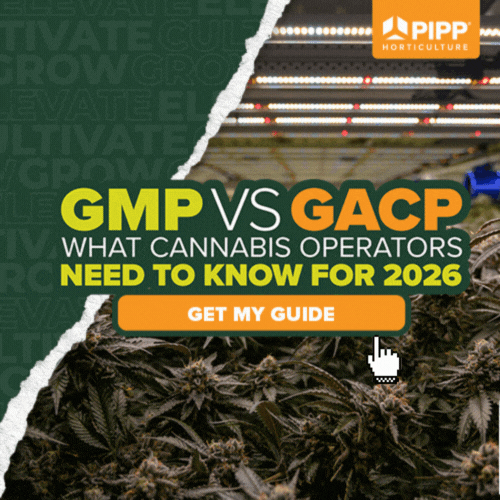

Growing hemp outdoors can present many challenges, some of which are out of the grower’s control. However, a lot of mistakes can be prevented. Now is a good time to start thinking about preparing for next year as the harvest is underway or over for many growers. Here are some tips to help start the next growing season off right.
Selecting the Optimal Field
1. Choose fertile sites with good drainage.
While this may be obvious to some, starting with an optimal site will set you up for success. But what is optimal? First, it is important to start with a fertile field because you will have to apply fewer fertilizer amendments to meet the demands of this fast-growing crop. Proper drainage is also important in regions with heavy rainfall, as heavy, compacted soils in low areas will cause poor stand establishment. This will vary by region, but here in Indiana, hemp is very unhappy in the heavy, wet fields.
2. Understand the history of your field.
Knowing the history of your field can be a challenge if you just purchased or are leasing the land. Talking with the people who previously farmed there (or possibly neighbors) can help you determine if disease problems or particular insects are common. For example, some pathogens can build up soil inoculum, like white mold (Sclerotinia sclerotiorum). Knowing if a field has a history of white mold is important, since this disease can kill hemp plants.
Some insects also tend to stay in a specific field area. For example, the common stalk borer (Papaipema nebris) often stays in one general field area, feeding on weeds until it becomes too big or the weeds are killed off. Then, it tends to move on to commercial crops, including hemp. Some pathogens and insects will be isolated to specific regions, so understanding your particular region is crucial.
3. Consider previous crops grown on that site.
I see hemp as a rotational crop, meaning it should be preceded and then followed by a non-hemp crop. Unfortunately, the U.S. does not yet have the ideal hemp rotation model figured out. For new farmers, if you have not thought about what other crops you are going to rotate after your hemp, that’s OK—but you should know what came before it. Some crops are great hosts for diseases that also affect hemp and should be avoided if possible. In my region of central Indiana, white mold attacks beans and sunflowers, so they should be avoided in a rotation that includes hemp, which is also susceptible to that pathogen. Previous herbicide use on crops like corn could carry over and affect your hemp as well by introducing issues such as reduced germination rates or stunted growth.
Developing Management Plans
4. Develop management plans for weeds far in advance.
Managing weeds is one of the biggest challenges growers in Indiana have struggled with. Cool, damp springs slow down hemp’s growth, making way for an explosion of weeds. With only two herbicides approved by the U.S. Environmental Protection Agency for use on hemp (both of which are vinegar-based products), chemical control of weeds while hemp is in the ground is not an option. Selecting a field site that has low weed pressure, managing weeds the previous year, and turning to organic weed management techniques, including cover crops to reduce weed pressure, should be included in an integrated pest management plan for weeds. Hemp producers growing for cannabinoids also have the option of laying plastic to reduce weed pressure surrounding each plant. (Editor's note: See "Bare Ground or Plasticulture: Which is Right for Floral Hemp Growers?" for more about plasticulture production.) Weeds between rows can be tilled, hoed or mowed if you decide to plant a cover crop.
5. Gather the right tools to manage diseases and insects.
Develop a plan to manage diseases and insects, because you will have them at some point. First, you will need the proper tools to identify diseases and insects. Guidebooks, extension resources and websites like the Colorado State University Hemp Insect Website are helpful resources.
I would stay away from forums and Facebook pages (unless they are monitored by experts). I see a lot of misidentification in those places, which can mess up management plans if you start trying to control the wrong pests. Insects can be easier to identify, but many pathogens will need to be diagnosed in a lab. Most land-grant universities have plant and pest diagnostic labs that offer sample identification at affordable rates. The Purdue Plant Diagnostic Lab, for example, only charges Indiana residents $11 to send in a physical sample for identification. It is worth having an expert diagnose your plant problems.
6. Develop relationships with other hemp growers and extension educators.
For both new and experienced growers, forming relationships with other farmers can help you develop a management plan. The same goes for working with county extension educators or specialists. Educators are there to help you find useful resources and work with experts at their universities. This means you can get access to some great resources for free (or at a low cost). They may not have all the answers you need, but they can help you work through a lot of questions.
Choosing Genetics Wisely
7. Understand how genetics may work in your region.
Most hemp genetics on the market are photoperiod-dependent, so they may not work in your region if they are bred in an area too far north or south of your latitude. Soybeans are very similar, and we have specific bean varieties for specific latitudinal regions. For growers using controlled environments, this isn’t as important because you can manage lighting, but outdoor growers need to consider hemp’s biology when choosing varieties. Ask the seed or clone seller about the daylength needed for the plants to flower.
8 Find a good source for seeds.
While this advice is common throughout the industry, it bears repeating: You need to select good seeds and genetics to make all the previous planning and site selection worth it. Even the most pristine field with no weeds and healthy soils will not matter if you have bad seed. Know how to read a seed label, work with companies that are in good standing with other growers, get seed tested at your in-state seed lab, and inspect certificates of analysis (COAs) with an eagle eye.
Horror stories about bad hemp genetics are rampant in the industry. One company duped a grower we worked with—the grower purchased so-called “CBD seeds,” only to end up with a huge field of plants containing 13% THC (far above the 0.3% THC limit). The seller was not registered to hold a seed permit in Indiana or their own state.
I also meet a lot of growers who need just a little bit of help understanding the breakdown of COAs. It is worth taking the time to read about testing methods and how to spot a fake COA. (See here for more information on how to pick out fraudulent and misleading COAs.)
Preparing Your Field
9. Identify when and how you will plant.
You might be surprised how many growers don’t plan ahead of time and end up hand-planting their entire field when they could have rented or borrowed a transplanting machine. Deciding when to plant is also important. The No. 1 problem we saw with plants coming into the diagnostic lab was root girdling (root constriction caused by plants staying in small plug trays for too long)—something that could have been prevented if growers would have planted immediately after they received their trays of plants.
10. Check clones and seedlings for proper root development and disease/pest issues.
If you are working with clones or seedlings, inspect them thoroughly. Root rot can be common in transplants, so check for healthy root formation. Also, pests like cannabis aphids, spider mites and russet mites are all common indoor pests that can be moved into a field along with the transplants. Starting off with weak plants could result in increased mortality and affect your final yields.
Marguerite Bolt is the hemp extension specialist at Purdue University’s Department of Agronomy. She received her M.S. in entomology from Purdue University and her B.S. in entomology from Michigan State University. Bolt’s research has focused on hemp-insect interactions and plant chemistry.
















